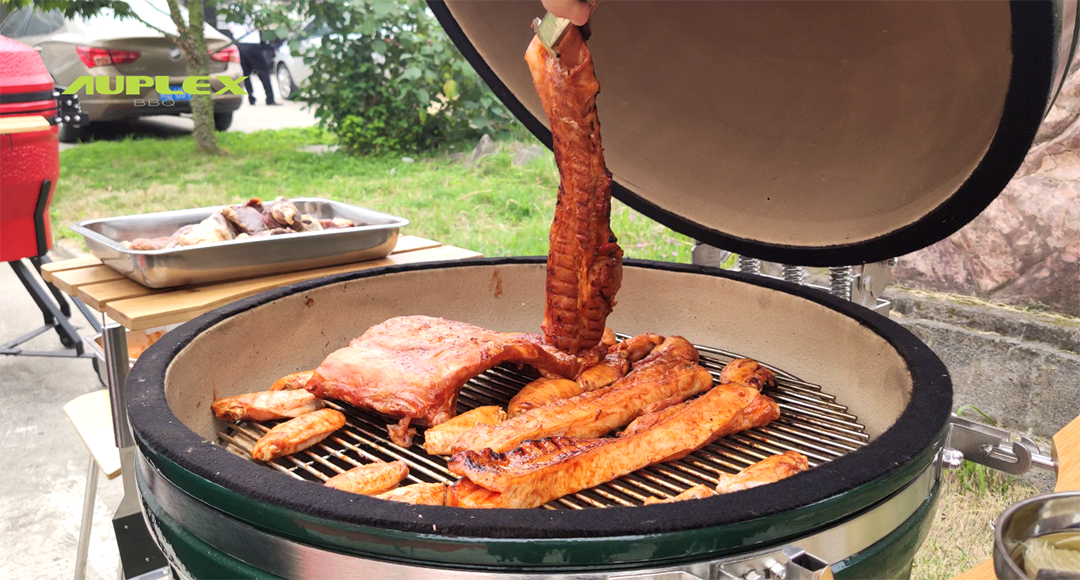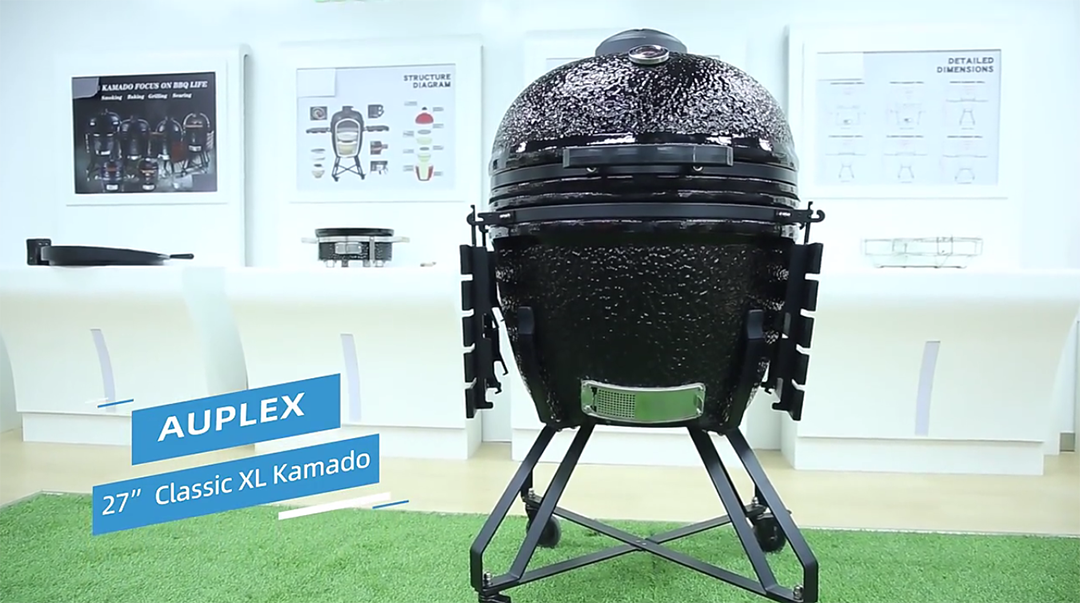Ceramic grills can cost a lot of money, so you may be asking yourself why you should buy one. We think the reason is obvious when you describe the construction of a ceramic grill, which in turn reveals some of the advantages of a ceramic grill.
First, ceramic grills are made of ceramic or refractory materials, which retain the heat in the oven better than metal cookware. Retaining heat is an advantage because it means you can maintain any given temperature inside a ceramic cooker with a lower fire than you need for a metal cooker. Of course, that means less fuel. For reference, a fully loaded large Auplex Kamado burning at 230° can run for up to 30 hours without refueling! This is very useful for cooks who spend long nights at low temperatures and slow barbecues. Also, a smaller fire means less air flowing through the cookware, and less air flowing through the cookware means the air flowing through the cookware takes less moisture out of the food. There’s no need for a water pot in a ceramic charcoal stove. It may be worth noting that retaining heat also means that the surface temperature of ceramic cookware will be lower than the surface temperature of metal cookware. Make no mistake, ceramic cookware gets hot over time, but not as hot as metal cookware and not as fast.
The second point to note is that the cooker has a lower vent to let air into the cooker, an upper vent to let air out of the cooker, and a gasket between the upper and lower halves to prevent accidental air flow in and out of where the two halves of the cooker are joined. This seal, combined with the upper and lower vents, allows you to precisely control the airflow through the cooker. The precise control of air flow gives you precise control over temperature and an incredible range of temperatures. For a graphic description of the possible temperature comparison of a ceramic charcoal stove with other types of cookware, check out our ceramic grill thermometer.
Check out the possible temperature ranges and the kinds of foods that ceramic charcoal stoves can cook! You can cold smoke cheese at 100 degrees. $150 beef jerky. $225 slow barbecue. $325 for barbecue. $375 Spatchcock chicken. $500 pizza. 700 degrees wok. 800 degrees new city style pizza. Grill steaks at temperatures over 1200 degrees. We don’t know about you, but we think there’s more to life than ribs, pulled pork and brisket. The ceramic charcoal stove can be used for roasting, grilling, grilling, burning, everything. Perhaps our favorite thing to cook in a ceramic pot is paella. Paella should be cooked outdoors over a wood fire. A ceramic charcoal stove is very close to this description, and it gives you more control over the temperature. With a ceramic charcoal stove, you can literally have a wood-burning oven on the back deck for baking handmade bread as well as pizzas, pies, tarts, cakes and brownies.
It is worth expanding on the 1200° figure we have provided. Thanks to the chimney effect created by the upper and lower vents on the cooker, you can reach grain-level temperatures above 1200°. (By contrast, it claims to be able to grill a steak at 1800°.) How does this compare to open grills such as Weber kettles? Our tests show that even lumps of charcoal burning in an open grill can only reach about 700°. Due to the lack of large amounts of air passing through the fire, these fires can only be reduced to lower temperatures.
Another benefit of ceramic grills is their long service life. They don’t rust. They don’t have burners that have to be replaced every few years. Many still cook using the original Kamado-style cookware introduced to the country in the 1960s. Today’s cookware is made of more advanced materials and, if properly maintained, can benefit you for a lifetime. A maker of barbecue ovens with different colors advises his customers to choose the colors wisely because they will one day give their cookware to their children.
So here are the main advantages of ceramic grills: long service life, low fuel consumption, long burning time, less water loss from food, more precise temperature control, a wider range of temperatures, and a wide variety of possibilities for the types of cooking you can do. Yes, they’re expensive, but if you’re looking for a good versatile charcoal cooktop, you should consider them when you’re ready to buy your next outdoor cookware.
Post time: Jul-11-2023



